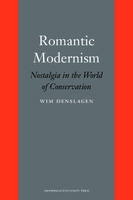Romantic Modernism
Nostalgia in the World of Conservation
| dc.contributor.author | Denslagen, Wim | |
| dc.date.accessioned | 2010-12-31 23:55:55 | |
| dc.date.accessioned | 2019-12-10 14:46:32 | |
| dc.date.accessioned | 2020-04-01T15:38:09Z | |
| dc.date.available | 2020-04-01T15:38:09Z | |
| dc.date.issued | 2009 | |
| dc.identifier | 340033 | |
| dc.identifier | OCN: 475641465 | en_US |
| dc.identifier | 995203994 | en_US |
| dc.identifier.uri | http://library.oapen.org/handle/20.500.12657/35294 | |
| dc.description.abstract | Is it possible for conservationists to approve of the reconstruction of old façades when virtually everything behind them is modern? Should they continue to protect the front façade, when the rest of the historic building has vanished? Is it socially responsible to spend government money on reconstructing a historic building that has been completely destroyed? Can one do such a thing fifty years on? According to reigning ideas in the world of conservation, the answer to all these questions is 'no'. It is felt that building a stage set is dishonest, and rebuilding something that no longer exists is labelled a lie against history. Where does this predilection for honesty originate? And why do people prefer modern architecture to the reconstruction of what has been lost? Perhaps we are witnessing the legacy of Functionalism here, a movement that denounced the building of pseudo-architecture. Functionalism originated in Romanticism, when architects turned their backs on academic formalism and strove to invent a new, rational form of building. This romantic hunger for honesty was adopted by the conservationists, giving rise to a new respect for the authentic art work and a rejection of historicist restorations. Among conservationists too, distaste arose for the cultivation of a harmonious urban image, because an urban image that is maintained artificially 'old' was seen as a form of fraud. | |
| dc.language | English | |
| dc.subject.classification | thema EDItEUR::A The Arts::AG The Arts: treatments and subjects::AGA History of art | en_US |
| dc.subject.classification | thema EDItEUR::6 Style qualifiers::6R Styles (R)::6RA Romanticism | en_US |
| dc.subject.classification | thema EDItEUR::A The Arts::AM Architecture::AMX History of architecture | en_US |
| dc.subject.classification | thema EDItEUR::N History and Archaeology::NH History | en_US |
| dc.subject.classification | thema EDItEUR::T Technology, Engineering, Agriculture, Industrial processes::TN Civil engineering, surveying and building::TNK Building construction and materials::TNKX Conservation of buildings and building materials | en_US |
| dc.subject.other | geschiedenis | |
| dc.subject.other | history, geography, and auxiliary disciplines | |
| dc.subject.other | architecture | |
| dc.title | Romantic Modernism | |
| dc.title.alternative | Nostalgia in the World of Conservation | |
| dc.type | book | |
| oapen.abstract.otherlanguage | Mag de monumentenzorg steun verlenen aan de reconstructie van de oude geveltjes wanneer daarachter vrijwel alles modern is? Moet de monumentenzorg alleen nog de voorgevel willen beschermen, als de rest van het monument is verdwenen? Volgens de gangbare opvattingen in de wereld van de monumentenzorg past op al dit soort vragen een negatief antwoord. Men vindt decorbouw oneerlijk, en iets herbouwen wat er niet meer is, noemt men een leugen tegen de geschiedenis. De vraag is waar deze hang naar oprechtheid vandaan komt. Misschien zien we hier de erfenis van het functionalisme dat bouwen van schijnarchitectuur verbood. Het functionalisme ontstond uit de Romantiek, toen architecten zich afkeerden van het academisch formalisme en een nieuwe rationele bouwkunst wilden uitvinden. Dit romantische streven naar oprechtheid werd in de monumentenzorg overgenomen. Wim Denslagen stelt dat de huidige monumentenzorg op bovengenoemde vragen ten onrechte een ontkennend antwoord geeft. | |
| oapen.identifier.doi | 10.5117/9789089641038 | |
| oapen.relation.isPublishedBy | dd3d1a33-0ac2-4cfe-a101-355ae1bd857a | |
| oapen.relation.isbn | 9789089641038 | |
| oapen.pages | 264 | |
| oapen.identifier.ocn | 475641465 | |
| oapen.identifier.ocn | 995203994 |

